MaryAnn Bernal's Blog, page 300
March 26, 2014
Roman Emperor Dressed As Egyptian Pharaoh in Newfound Carving
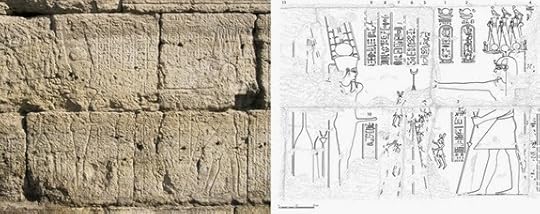 By Owen Jarus, Live Science Contributor
By Owen Jarus, Live Science ContributorAn ancient stone carving on the walls of an Egyptian temple depicts the Roman emperor Claudius dressed as an Egyptian pharaoh, wearing an elaborate crown, a team of researchers has discovered.
In the carving, Emperor Claudius, who reigned from A.D. 41 to 54, is shown erecting a giant pole with a lunar crescent at the top. Eight men, each wearing two feathers, are shown climbing the supporting poles, with their legs dangling in midair.
Egyptian hieroglyphs in the carving call Claudius the "Son of Ra, Lord of the Crowns," and say he is "King of Upper and Lower Egypt, Lord of the Two Lands." The hieroglyphs say he is raising the pole of the tent (or cult chapel) of Min (an ancient Egyptian god of fertility and power) and notes a date indicating a ritual like this took place around the summertime researchers say. It would have taken place even though Claudius never visited Egypt. A cult chapel is a place of worship and a tent could also be used for this purpose. [See Photos of the Egyptian Carving and Emperor]
The elaborate crown on Claudius consists of three rushes (plants) set on ram horns with three falcons sitting on top. Three solar discs representing the sun (one for each plant) are shown in front of the rushes. Egyptian rulers are shown wearing crowns like this relatively late in ancient Egyptian history, mainly after 332 B.C., and they were worn only in Egypt. The Roman Empire took over Egypt in 30 B.C., and while the Roman emperors were not Egyptian, they were still depicted as pharaohs Egyptologists have noted.
In the recently discovered carving, the god Min is shown wearing his own crown and has an erect penis, because Min was a god of fertility, the researchers said. The hieroglyphs describe Min as "the one who brings into control the warhorses, whose fear is in the Two Lands." Min tells Claudius, "I give you the (southern) foreign lands," which researchers say could be a reference to the deserts surrounding the Nile River, where minerals could be quarried.
The scene was discovered on the western exterior wall of the Temple of Isis at Shanhur, located on the east bank of the Nile River about 12 miles (20 kilometers) north of Luxor. It is an Egyptian temple built and decorated during the Roman occupation under Augustus (who reigned from about 30 B.C. to A.D. 14) through to Trajan (who reigned from A.D. 98 to 117). The pole-raising scene was first found during the 2000-2001 excavation season and was recorded in full during the 2010 epigraphic (recording) season. The temple originally had 36 scenes on each of its eastern and western exterior walls, and this new scene, protected for millennia by a layer of dirt, is one of the best preserved.
The study was published recently in the journal Zeitschrift für ägyptische Sprache und Altertumskunde by Martina Minas-Nerpel, a Reader (the American equivalent of an associate professor) at Swansea University in the United Kingdom, and Marleen De Meyer, a postdoctoral researcher at KU Leuven University in Belgium. Careful line drawings of the scene were done by Troy Sagrillo, a senior lecturer at Swansea University.
Roman pharaohs
Although Cleopatrais often called the "last pharaoh of Egypt," the Egyptian priests depicted the Roman emperors as pharaohs up until the fourth century A.D. The Roman emperors allowed, or even encouraged, these depictions in Egyptian temples in order to keep Egypt — which was an important Roman province — stable. [Cleopatra & Olympias: Top 12 Warrior Moms in History]
"Although we know that Claudius, as most Roman emperors, never visited Egypt, his rule over the land at the Nile and the desert regions was legitimized through cultic means," Minas-Nerpel and De Meyer wrote in the journal article. "By decorating the exterior temple wall with this ritual, Claudius theoretically received Min's characteristics and thus his ability to rule over Egypt."
The researchers noted that similar scenes showing a pole being raised for the god Min date as far back as 4,300 years ago, during the age when pyramids were being built in Egypt. This tradition of creating pole-raising scenes was continued into the period of Roman rule.
Real-life ritual
In addition, the date on the carving indicates that a ritual like this took place in real life, the researchers said, adding that people may have climbed the central pole of the chapel of Min. In fact, a priest may have stood in for the absent Claudius, and a statue could have been used to represent Min, Minas-Nerpel said.
"What we see depicted on the temple scene is the ideal scenario," Minas-Nerpel told Live Science. She added that, even before the Romans took over Egypt in 30 B.C., Egypt's pharaohs were unable to take part in each temple ceremony in person, and stand-ins would have been necessary.
Lettuce scene
Another ritual offering at the Shanhur temple depicted at the axially corresponding scene on the eastern exterior wall shows Claudius giving an offering of lettuce to Min, which symbolizes the continued fertility of Egypt. It is located on the east wall and did not have to be excavated. In this scene, the Egyptian god Horus (shown as a child) is depicted between the two.
"[Take for] you the lettuce in order to unite it with your body (or phallus)," Claudius says to Min in hieroglyphs shown on the depiction. At one point, Claudius says, "One is in fear when seeing your face."
The two scenes highlight fertility and victorious power, both of which were important for legitimizing the rule of an absent Roman emperor who wanted to control Egypt, Minas-Nerpel and De Meyer wrote.
The Shanhur project and team
In 2009, Minas-Nerpel (principal investigator) and Harco Willems, a professor of Egyptology at the KU Leuven in Belgium, were jointly awarded the research grant by the Gerda Henkel-Foundation of Düsseldorf, Germany, to continue research at the temple of Isis at Shanhur in Upper Egypt. The project was also sponsored by the Engineering and Physical Science Research Council in the United Kingdom. The international team also included De Meyer, Peter Dils (of the Universität Leipzig in Germany), René Preys (of the Facultés Universitaires Notre-Dame de la Paix in Namur and KU Leuven), and Sagrillo. In Egypt, the mission was supported by the Supreme Council of Antiquities, theDeutsches Archäologisches Institut, Cairo (DAI) and the Nederlands-Vlaams Instituut in Cairo.
An article on Shanhur temple by De Meyer and Minas-Nerpel can be seen on the UCLA Encyclopedia of Egyptology at http://escholarship.org/uc/item/5hc3t8dh.
http://www.livescience.com/44350-carving-shows-roman-emperor-dressed-as-egyptian-pharaoh.html

Published on March 26, 2014 03:36
March 24, 2014
History Trivia - City of Venice founded
March 25
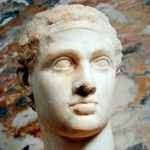
47 BC Ptolemy XII, King of Egypt and brother of Cleopatra, drowned in the Nile, probably with an assist by Julius Caesar, who thereby made Cleopatra queen.

421 City of Venice founded.

708 Constantine I began his reign as Catholic Pope.

1199 Richard I was wounded by a crossbow bolt while fighting France which led to his death on April 6.

1306 Robert the Bruce was crowned King of Scotland.


47 BC Ptolemy XII, King of Egypt and brother of Cleopatra, drowned in the Nile, probably with an assist by Julius Caesar, who thereby made Cleopatra queen.

421 City of Venice founded.

708 Constantine I began his reign as Catholic Pope.

1199 Richard I was wounded by a crossbow bolt while fighting France which led to his death on April 6.

1306 Robert the Bruce was crowned King of Scotland.

Published on March 24, 2014 15:35
Egyptian Grape Guard's Ancient Contract Decoded
 By Megan Gannon, News Editor
By Megan Gannon, News Editor An ancient labor contract by a guard hired to protect a vineyard in ancient Egypt has been deciphered. Scrawled in Greek on a piece of dark brown papyrus, the document dates back to the 4th century A.D., a new research paper claims.
Guarding vineyards in Egypt more than 1,600 years ago was no easy task. Other ancient sources describe grape-seeking thieves who violently beat watchmen in pursuit of the fruits ripe for winemaking. Crime could be especially high from July to September, the time of the harvest, writes Kyle Helms, a classics doctoral student at the University of Cincinnati.
Grape thefts even found their way into poetry. A verse by the Roman poet Catullus says a married woman "must be watched more carefully than the darkest grapes."
The newly translated papyrus, described in the Bulletin of the American Society of Papyrologists, had been sitting in a collection at the University of Michigan for nearly a century. The fragile document contains large, cursive script in a style of handwriting consistent with the 4th century A.D. At the time, the Roman Empire was in control of Egypt.
According to Helms' translation, the ancient text reads: "I agree that I have made a contract with you on the condition that I guard your property, a vineyard near the village Panoouei, from the present day until vintage and transport, so that there be no negligence, and on the condition that I receive in return for pay for all of the aforementioned time …"
Sadly that's where the contract cuts off. It remains a mystery how much the guard was paid. This contract also contains the first mention of a city called Panoouei, Helms wrote. It is not clear where ancient village was, especially since vineyards were found from the Delta in the north to Elephantine, an ancient city several hundred miles south along the Nile.
Ancient fragments of papyrus can provide rare snapshots into everyday Egyptian life. For example, a newly translated letter reveals the complaints of an Egyptian solider posted in modern-day Hungary 1,800 years ago. In an even older find, archaeologists recently discovered the 4,500-year-old diary of an official who helped to lead the construction of the Great Pyramid.
http://www.livescience.com/44321-egyptian-grape-guard-ancient-contract.html

Published on March 24, 2014 15:31
Humans to Blame for Giant Bird's Extinction
 By Megan Gannon, News Editor
By Megan Gannon, News EditorFossils are all that's left of the giant wingless birds called moa that once roamed New Zealand. These big-bodied megaherbivores, some of them weighing up to 550 pounds (250 kilograms), disappeared soon after Polynesians colonized the islands in the late 13th century.
Some researchers had argued the nine species of moa were already in decline by the time humans entered the scene. Others had proposed the birds' population collapsed in the wake of volcanic eruptions or the spread of diseases, before they ever met Homo sapiens. A new study, however, suggests humans are responsible for the birds' demise.
"Elsewhere the situation may be more complex, but in the case of New Zealand the evidence provided by ancient DNA is now clear: The megafaunal extinctions were the result of human factors," Mike Bunce, a professor at Curtin University in Australia, said in a statement. [Wipe Out: History's Most Mysterious Extinctions]
[image error] [image error]

 An artist's rendition of an eagle attacking two extinct New Zealand moa.
An artist's rendition of an eagle attacking two extinct New Zealand moa.Credit: John Megahan View full size image
By looking at the genetic profiles of 281 individual fossil specimens, Bunce and colleagues pieced together the demographic trends across four different species of moa during the 5,000 years leading up to their extinction. They say they found no genetic signatures of decline.On the contrary, genetic diversity remained consistent and the moa gene pools were "extremely stable throughout their last 5,000 years," said Morten Allentoft, who was a doctoral student in Bunce's lab.
One species, the South Island giant moa (Dinornis robustus), even seemed to be experiencing a population boom with as many as 9,200 individuals roaming about by the time Polynesians landed on New Zealand's shores.
"If anything it looks like their populations were increasing and viable when humans arrived," Allentoft said in a statement. "Then they just disappeared."
Archaeological evidence shows that moa were hunted voraciously and vanished just one or two centuries after humans showed up in New Zealand. In addition to overhunting, other indirect human impacts could have contributed to the moa's quick decline, including fires and the introduction of invasive species.
Bunce believes there are lessons to be learned from the moa's extinction.
"As a community we need to be more aware of the impacts we are having on the environment today and what we, as a species, are responsible for in the past," Bunce said.
The research was detailed this month in the Proceedings of the National Academy of Sciences.
http://www.livescience.com/44291-humans-to-blame-for-giant-birds-extinction.html

Published on March 24, 2014 15:16
Mr. Chuckles is proud to present Authorsdb Fabulous Five

Mr. Chuckles invites you to visit the Authorsdb profile pages:
Mary Ann Bernal
http://authorsdb.com/authors-directory/1446-mary-ann-bernal
Bill Jones, Jr.
http://authorsdb.com/authors-directory/6284-bill-jones-jr
Mark Barry
http://authorsdb.com/authors-directory/1438-mark-barry
K. Meador
http://authorsdb.com/authors-directory/4488-k-meador
Ngaire Elder
http://authorsdb.com/authors-directory/6064-ngaire-elder

Published on March 24, 2014 06:08
Stonehenge: 7 Reasons the Mysterious Monument Was Built
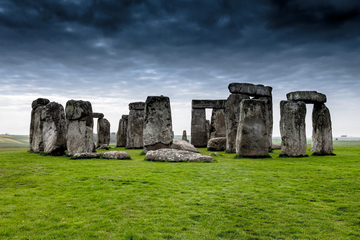 By Tia Ghose, Staff Writer Researchers recently had the rare chance to thwack the giant megaliths at Stonehenge and noted that they each resonated with sounds like those of metallic or wooden bells. They proposed that the strange monument was once either an ancient long-distance communication system, or a Stone Age church bell system.But despite centuries of speculation, scientists aren't much closer to revealing why the enigmatic monument was raised on the Salisbury plain in England thousands of years ago. Legends ascribe the site to Merlin's wizardry, and conspiracy theorists have credited aliens and UFOs for the megaliths. Meanwhile, scientists propose more grounded theories about the site. From giant musical instrument to elite burial ground, here are seven of the most popular theories about why Stonehenge was built. [In Photos: A Walk Through Stonehenge]
By Tia Ghose, Staff Writer Researchers recently had the rare chance to thwack the giant megaliths at Stonehenge and noted that they each resonated with sounds like those of metallic or wooden bells. They proposed that the strange monument was once either an ancient long-distance communication system, or a Stone Age church bell system.But despite centuries of speculation, scientists aren't much closer to revealing why the enigmatic monument was raised on the Salisbury plain in England thousands of years ago. Legends ascribe the site to Merlin's wizardry, and conspiracy theorists have credited aliens and UFOs for the megaliths. Meanwhile, scientists propose more grounded theories about the site. From giant musical instrument to elite burial ground, here are seven of the most popular theories about why Stonehenge was built. [In Photos: A Walk Through Stonehenge]1. Sacred hunting ground
The area around Stonehenge was a hunting ground along an ancient auroch migration route thousands of years before the first stones were raised, according to archaeological evidence. A site just a mile (1.6 kilometers) away from the Wiltshire, England-megaliths contains evidence of human occupation spanning 3,000 years, including thousands of auroch bones, flint tools and evidence of burning. The Stonehenge site itself bears evidence of construction as far back as 8,500 to 10,000 years ago, when a few pine posts were raised to create an ancient structure. This archaeological evidence hints that the site was originally an ancient hunting and feasting site, and perhaps the megaliths were raised to memorialize the meaty bounty.
2. Unity monument?
Stonehenge's construction may have been about more than primeval barbecue cookouts. Some believe the British megaliths were erected to celebrate peace and unity. During the monument's period of intense building, between 3000 B.C. and 2500 B.C., the culture of the British isle was increasingly unified, a fact exemplified by more uniform pottery styles taking hold throughout the region. The massive endeavor would have taken thousands of laborers and employed stones from far-flung Wales. Working on such a big collaborative project would have been a unifying exercise on its own.
3. Astronomical calendar
Many believe the ancients celebrated winter solstice at Stonehenge. The avenue near Stonehenge is aligned with the winter solstice sunset, and nearby archaeological evidence suggests that pigs were slaughtered during December and January — possibly for a mid-winter feast. The site also faces the sunrise during the summer solstice, and thousands of visitors still flock to the site every year to celebrate at that time. [Gallery: Stunning Summer Solstice Photos]
4. Stonehenge sound illusion
Two pipers playing in a field around Stonehenge would have the sounds canceled out at certain spots, a sound illusion that may have inspired Stonehenge builders, according to a presentation given at the 2012 American Association for the Advancement of Sciences meeting. The megaliths might have been raised to augment the area's natural sound cancellation, with the boulders selectively blocking sound. In fact, the monument is often nicknamed "The Piper's Stones" in England, and legend holds that magic pipers led maidens to the field, and then turned them into the stones present today. Even those who don't buy the sound illusion theory don't deny that Stonehenge had amazing acoustics, with the cavernous echoes typically found in a lecture hall or a cathedral.
5. Elite cemetery
The mysterious monument may have once been a burial ground for the elite, according to one study. Thousands of skeletal fragments from at least 63 individuals have been exhumed from the area, with an equal proportion of men, women and children found there. The burials date to 3000 B.C., as construction of the monument was getting started. Archaeologists have also unearthed a possible incense bowl and a mace head, an object usually associated with the elite in ancient society.
6. Giant bells
The newest theory suggests the dolerites and sarsens at Stonehenge produce unique, subtly different sounds similar to hollow wooden or metallic bells. Because the sounds would have carried over long distances, these sounds could have been a form of primitive communication, or alternatively, they may have been used much as church bells are today. The idea of using rocks to make music isn't new; many other cultures have employed lithophones — essentially giant Flintstones-like xylophones that produce unique sounds.
7. Healing site
Many of the skeletons buried near the site bear marks of illness or injury, leading Geoffrey Wainwright and Timothy Darvill to propose the site was a spot for ancient healing. Lending credence to that theory, many of Stonehenge's bluestones have been chipped away over the ages, perhaps by long-lost pilgrims seeking protective or healing talismans from the location. Of course, Stonehenge may have built for many, some or none of these reasons, and odds are no one will ever know for sure.
http://www.livescience.com/44283-why-stonehenge-was-built-theories.html

Published on March 24, 2014 05:56
Noah's ark: Did Hollywood get it right?
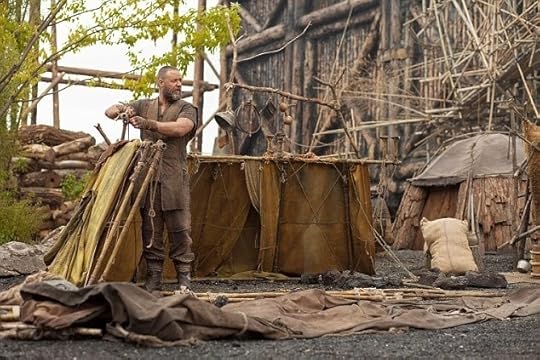
By Rossella Lorenzi
In Darren Aronofksy's forthcoming epic "Noah," the vessel by which the biblical hero saves himself, his family, and pairs of animals from the apocalyptic flood appears like a huge shipping container standing some 50 feet tall and 500 feet long.
The design was inspired by "going back to what God tells Noah in the Bible," Aronofksy said in a behind-the-scenes featurette recently released by Paramount.
The problem is, Russell Crowe's Noah might have gotten the wrong instruction manual.
Photos: Noah's Ark in its Many Forms
'A round boat makes perfect sense in Mesopotamia where round boats are likely to have been used on the Tigris and Euphrates rivers.'- Elizabeth Stone, an anthropology professor at New York's Stony Brook UniversityThe original Noah's Ark was a giant round vessel, says a script on an 3,700-old clay tablet now on display at the British Museum in London.
Found in the Middle East in the late 1940s by Leonard Simmons, who then passed it to his son Douglas, the cracked, smartphone-sized tablet consists of 60 lines in cuneiform. It was translated by Irving Finkel, curator of the British Museum's 130,000 Mesopotamian clay tablet collection.
The tablet turned out to be a detailed construction manual for building an ark with palm-fiber ropes, wooden ribs and coated in hot bitumen to make it waterproof.
The vessel, however, was round.
"The Babylonians of around 1750 believed the ark in the flood story was a giant version of the type of coracle that they actually used on the rivers," Finkel told Discovery News.
Tsunami-Proof Ark Floats Our Boat
The coracle described in the tablet was "the largest the world had ever dreamed of, with an area of 3,600 square meters, and 6-meter high walls," Finkel said.
"A round boat makes perfect sense in Mesopotamia where round boats are likely to have been used on the Tigris and Euphrates rivers. It would not have made much sense in the Levant where you don't have rivers like that," Elizabeth Stone, an anthropology professor at New York's Stony Brook University, told Discovery News.
Indeed, a waterproofed coracle would never sink.
"Being round isn't a problem -- it never had to go anywhere: all it had to do was float and keep the contents safe: a cosmic lifeboat," Finkel wrote in his British Museum blog.
Over the centuries, the ark has been depicted in many ways. Although the Bible specifies its dimensions -- 300 cubits (about 450 feet) long, 50 cubits (about 75 feet) wide, and 30 cubits (about 45 feet) high -- it doesn't provide any clue about what it looked like.
Biblical creationists imagined Noah's Ark like a large, box-like vessel similar to the version shown in Aronofksy's $130 million epic movie. Other designs added a sloping roof and matched the ships of the day, from square-rigged caravels to long vessels with pointy bows.
The most elaborate depiction of the ark was produced in the 17th century by the German Jesuit scholar and polymath Athanasius Kircher. He calculated the number of animals that could fit in the ark and conceived a three-storied box with a double-pitched roof, a door and a window. He placed quadrupeds on the bottom, birds and humans on the top and serpents in the bilge, while food and water were stored in the middle.
Moses' Red Sea Parting Explained by Computer Model
His design fit popular imagination and set the standard for children's story books. There, the ark is often depicted as a large house on a boat, with a pair of giraffes sticking out of the roof.
According to Genesis, after the flood killed nearly everything on Earth, the ark came to rest on the mountains of Ararat in Eastern Turkey.
Despite innumerable expeditions to find the biblical vessel, none has been successful.
"I do not believe the ark really existed," Finkel said.
"I think that the flood story echoes the memory of a real devastation but that the ark is a component of the mythology that developed to avert the fear of its happening again," he concluded.
http://www.foxnews.com/science/2014/03/21/noah-ark-did-hollywood-get-it-right/

Published on March 24, 2014 05:51
History Trivia - Elizabeth I dies
March 24
 King John in Robin Hood
King John in Robin Hood
1208 King John of England opposed Innocent III on his nomination for archbishop of Canterbury.
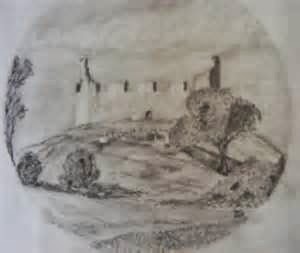
1550 France, England and Scotland signed the Peace of Boulogne, ending the War of the Rough Wooing (conflict between England and Scotland with the Scots receiving French military aid).

1603 Elizabeth I died and James VI of Scotland became James I of England, unifying the English and Scottish crowns.

 King John in Robin Hood
King John in Robin Hood1208 King John of England opposed Innocent III on his nomination for archbishop of Canterbury.

1550 France, England and Scotland signed the Peace of Boulogne, ending the War of the Rough Wooing (conflict between England and Scotland with the Scots receiving French military aid).

1603 Elizabeth I died and James VI of Scotland became James I of England, unifying the English and Scottish crowns.

Published on March 24, 2014 05:47
Earliest Invasive Cancer Found in 3,000-Year-Old Skeleton
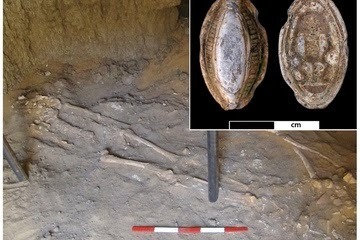 By Charles Q. Choi, Live Science Contributor
By Charles Q. Choi, Live Science Contributor A 3,000-year-old skeleton from a conquered territory of ancient Egypt is now the earliest known complete example of a person with malignant cancer spreading from an organ, findings that could help reveal insights on the evolution of the disease, researchers say.
Cancer is one of the world's leading causes of death today, with numbers more than doubling over the past 30 years. However, direct evidence of cancer from ancient human remains is very rare compared with that from other medical conditions. This suggests the disease could mainly be a product of modern factors such as smoking, diet, pollution and greater life expectancies.
To better understand the apparent rising prevalence of cancer over time, scientists want to investigate signs of cancer in ancient humans. Past research had often discovered evidence of tumors in skeletons — but they were benign ones that lacked the ability to invade neighboring tissues.
[image error] [image error]
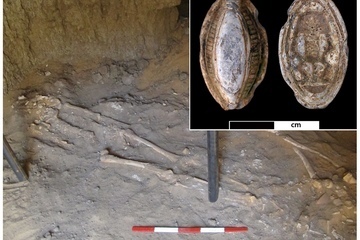
 Here, the ancient Egyptian skeleton (called Skeleton Sk244-8) in its original burial position in a tomb in northern Sudan in northeastern Africa, with a blue-glazed amulet (inset) found buried alongside him; the amulet shows the Egyptian god Bes depicted on the reverse side.
Here, the ancient Egyptian skeleton (called Skeleton Sk244-8) in its original burial position in a tomb in northern Sudan in northeastern Africa, with a blue-glazed amulet (inset) found buried alongside him; the amulet shows the Egyptian god Bes depicted on the reverse side.Credit: PLOS ONE View full size image A 3,000-year-old skeleton from a conquered territory of ancient Egypt is now the earliest known complete example of a person with malignant cancer spreading from an organ, findings that could help reveal insights on the evolution of the disease, researchers say.
Cancer is one of the world's leading causes of death today, with numbers more than doubling over the past 30 years. However, direct evidence of cancer from ancient human remains is very rare compared with that from other medical conditions. This suggests the disease could mainly be a product of modern factors such as smoking, diet, pollution and greater life expectancies.
To better understand the apparent rising prevalence of cancer over time, scientists want to investigate signs of cancer in ancient humans. Past research had often discovered evidence of tumors in skeletons — but they were benign ones that lacked the ability to invade neighboring tissues.
However, until now, there were just three tentative examples of malignant tumors predating 1000 B.C. — cancers that can metastasize, or spread to distant parts of the body. (Most people who die of cancer nowadays do so when it metastasizes, as tumors are typically more treatable before they spread.)
Now scientists have found the oldest known complete example of a human skeleton with metastatic cancer — remains unearthed in a tomb in northern Sudan in northeastern Africa. [See Photos of the Ancient Skeleton and Cancerous Tumors]
"The most important implication is that cancer did affect people in the past, too," study lead author Michaela Binder, a bioarchaeologist at Durham University in England, told Live Science. "People have suspected that but again there is very little proof for that."
The skeleton was discovered at the archaeological site of Amara West, located on the left bank of the Nile River, about 465 miles (750 kilometers) downstream of Sudan's modern capital of Khartoum. Aside from a narrow strip of shrubs and trees on the riverbank, the area is now largely desert.
The researchers said the skeleton belonged to a man they estimated was between 25 and 35 years old when he died. He was buried on his back with a faded blue-glazed ceramic amulet in what is now a badly deteriorated painted wooden coffin, alongside 20 other people, perhaps his family.
Life in ancient Nubia
The ancient settlement at Amara West "was founded around 1300 B.C. as the new administrative capital of Kush, the province of Upper Nubia, which was occupied by the ancient Egyptian empire between 1500 B.C. to 1100 B.C.," said Binder, who excavated and examined the skeleton in 2013. Pottery recovered from the skeleton's tomb suggests it dates to the 20th Dynasty of ancient Egypt, or about 1187 to 1064 B.C., when Egypt had conflicts with Libya and while pharaohs such as Ramses III were being buried in the Valley of the Kings. [In Photos: The Mummy of King Ramses III]
Archaeologists are investigating the site because "many questions about the time period of Egyptian occupation of Nubia are still open — most importantly, what was it like to live in occupied Nubia," Binder explained. She said that Amara West is incredibly well-preserved, permitting "a very rare opportunity to not only draw a really comprehensive picture of what life in ancient Nubia was like, but also how it changed over time," Binder said.
At this site, local Nubian peoples lived according to Egyptian standards. For instance, the architecture of this skeleton's tomb is evidence of a hybrid blend of Egyptian elements such as painted coffins and burial gifts alongside Nubian elements such as a low mound to mark the tomb.
"From footprints left on wet mud floors to the healed fractures of many ancient inhabitants, Amara West offers a unique insight into what it was like to live there — and die — in Egyptian-ruled Upper Nubia 3,200 years ago," study co-author and project director Neal Spencer at the British Museum said in a statement.
The main hazard of working at Amara West "are the nimiti, small black flies that are a pest that usually befalls the area between January and March for about six weeks," Binder said. "They produce painful bites; on bad days, we can only work covered in mosquito nets. There are also quite a lot of crocodiles in the area; we see them from the boat when we go back from [the] site around lunch time, but they usually don't attack people."
Still, "the work at Amara West was one of the least difficult and most enjoyable research projects I've ever worked on," Binder said. "We live on a small island of about 300 inhabitants near the site in a traditional Nubian mud brick house amidst a group of other vividly colored Nubian houses. The people are exceptionally friendly."
http://www.livescience.com/44269-oldest-metastatic-cancer-skeleton.html

Published on March 24, 2014 05:47
March 22, 2014
Please welcome the Great Wizard of Notts, a.k.a. Mark Barry, author of The Night Porter
Today, the great Wizard of Notts and Cauldron fame, aka Mark Barry, has graciously agreed to say a few words about himself, his work and his future aspirations as Green Wizard Publishing celebrates two years in the business.

Thanks for stopping by, Mark.
First, please remind people who you truly are - you do not need to betray state secrets, or you can, if you wish to reveal true confessions. Only kidding, Great Wizard. My fans just want to know a little bit about the REAL you.
Me? My name is Mark Barry. That’s my real name. I live in Nottinghamshire in the heart of Robin Hood country. I am passionate about reading (note, not writing), books, comics, music, Notts County (note, not football) and most of all, aside from family, horse racing. I lovethat sport with a passion. I don’t smoke, drink (much) and run thirty miles a week. In a fortnight’s time, my company, Green Wizard, is two years old.
And I make a profit. Not a huge one, but I filed a profit nonetheless.

Mark with his son, Matthew, who, so far, shows no sign of following in his father’s literary footsteps – though he does fanatically support Notts County (which is a much more important trait).You’re a big fan of the Magpies (Notts County football team), and have written about fans supporting the team in two novels, Ultra Violence and Violent Disorder, which are Green Wizard Publishing’s best sellers. Were you surprised by the interest your football hooligan stories have generated? If so, why.

The first book, as you know, went through the roof and I attracted some good numbers. It’s a genre book, of interest to football fans and mainly hooligans, though I know you, Ngaire and Brenda have all read the books and enjoyed them, which was really surprising. Genre books sell. They have a ready audience. Look at romance. Even the most uninspired of writers can make a living selling romance novels. It’s in the genre. I wasn’t surpised though:The two books are written completely differently to the other football books – the closest I can think of is Awaydays by Kevin Sampson, though my favourite, like many other hooligan writers, is Football Factory by John King. A masterpiece. So, innovation always attracts some attention.

Why do you feel you had to tell this story about violence in sports?
Simple. I wanted to tell a story about small clubs, a small club like Notts, and the people involved in what was relatively small scale violence. I thought there was a gap too. Most hooligan books are about the big boys, the Millwalls, the Stokes, the Chelseas, the West Hams, the Birmingham Cities, the Cardiffs, etc. I thought it was about time I told the Notts story. Particularly as our deadliest rivals, Nottingham Forest had a book out there which is written by Martin King, who specializes in this kind of genre work.
How realistic are your stories?
In the football? All of them happened. Bang on. The rest of the books are fictional stories based on my observations, like other writers, and turned into big long tales.

What is the hardest part of writing your books? Do you start at the beginning and continue writing until the story is completed, or do you write chapters out of sequence?
I am a blank page writer and start at the Once Upon a Time stage. I detest editing and proofing and I rarely redraft. Give me a blank page and I am at my happiest. I don’t reread my work after its published. I shelve it. I know writers who have eight or nine drafts of a book. No way. I have to get my book finished or I reach a boredom zone. The Ritual, which is being re-released as a six (or seven) book mini-series is an exception. I saw that backwards, from the end, which is why I had to rewrite it as the middle needed a LOT of work. I didn’t say I was perfect, Mary Ann

How do you come up with the titles for your novels? Do you use working titles or are your titles set in stone? Do you have a title before you start the story, or do you choose a title once the story is completed?
All the titles bar The Ritual were conceived at the beginning of the process. I cannot believe that I was able to get Ultra Violence and Violent Disorder as titles. I like my titles. The Ritual was known as The Daughter of Satan until I saw how many other books, mostly porn, had the same title. Twenty or thirty. Happy with The Ritual as a title. It does exactly what it says on the tin. There is a great line in Book Six which would have been even better had the original title remained. I love titling and naming.

What is your favorite novel written by you, and why?
My latest book The Night Porter, without a doubt. Everything else has at least one flaw. In UV, you never find out what happens to the narrator’s job. Same as BBVD. That book may as well not have a framing sequence! Hollywood Shakedown, which a few people really like, slows down after a melting start before picking up again. Carla is oppressively dark for me nowadays – I’ve cheered up no end – and I can no longer see the black humour and the bitterness is overwhelming at times. There is one fantastic chapter in there called Smash Box which is pretty well written. The Ritual has that terrible middle that old school horror writers could get away with in the pre-Playstation era, like Stephen King’s utterly mind numbing democracy chapters in The Stand, an otherwise melting book at both ends. You couldn’t wait for that stuff to end, but you carried on, knowing that Randall Flagg was about and he was well evil!! Nowadays, modern pop kids, with hundreds and thousands of books to choose from won’t forgive a writer his fancies. They want perfection and they want it now. TNP, as you and I know it, is fast, well-paced, clever, innovative, conceited, intricate, shallow when it needs to be, with decent dialogue and interesting characters. Its accessible to both genders and most ages, though young readers seem to read their own stuff nowadays, which is of limited interest to me, excessively dialogue based as it is.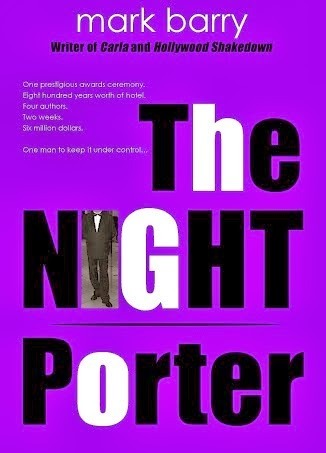
I just love when you mention ancient times in your novels. For those fans who have yet to read your work, your passion is evident with the historical references you weave throughout your stories. Since you are so knowledgeable, would you consider delving into the realm of historical fiction? Ancient Rome and/or Roman Britain, perhaps? Or William the Conqueror? Just teasing you, Great Wizard - I know your true feelings about the aftermath of the Bastard’s invasion. Just a thought since you write in multiple genres. That being said, would you care to comment?
Why would I compete with you out there, Mary Ann? You wrote the best historical fiction book I am ever likely to read with The Briton and the Dane: Concordia. I couldn’t do it justice, though I would love to do a barbarian book. Robert E Howard was one of my very favourite writers. I do love history though and have a running plotline throughout all my books about the lingering impact of the Norman success at Hastings in 1066. Life would have been very different had Harold not had that two week forced march from Stamford Bridge. And they nearly won!!
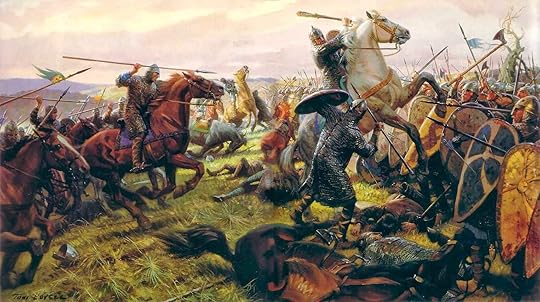 Battle of Hastings
Battle of Hastings
I am interjecting here, a passage from the first edition of “The Ritual”, which mentions Romans, Saxons, Normans, pagans, and druids - all in the same place. Love it!“We know nothing about the Villa, but we do know that the Romans built their temples on pagan ceremonial sites. Something traditionally done, each successive conqueror dynasty supplanting the sites, the churches, and the sacred spaces of the conquered. The Norman-built Three Steeples Church, for example, is built on a Saxon place of worship. The Saxon, in turn, is built on the Roman Villa site. The Romans built the Villa on an expansive Pagan ceremonial wood and a Druid burial site. Druids from this area fought alongside Boudicca in the forest, and they helped butcher a Legion, something that enraged Rome. Eventually, the rebellion faltered. Hence, the Villa and Temple built on one of their most sacred places. Those Druids practiced wood magic, sun worship, harvest rituals and human sacrifice. Like Stonehenge, this whole region drips in magical lore and a religious culture, which goes back thousands of years, all the way back to the times primitive societies began to develop faith and beliefs. Arkwright must have known this, which is why he built this masterpiece right here.” He put his arm around Jennifer again. “Listen. Feel. Embrace it, Jennifer. If you concentrate, you can sense the spirits here.”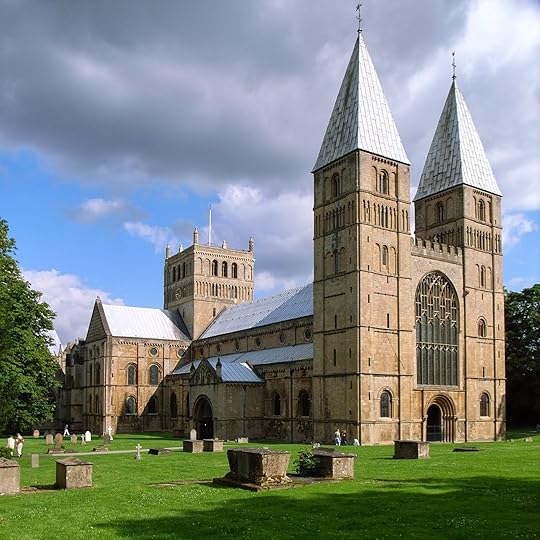
Southwell Minster
That’s Doctor Merchant. I’d know his portentous prose anywhere, Mary Ann. I actually live a hundred yards away from The Minster and have had a look at the old Villa up close. If the mini-series sells, I’ll write a loose sequel called Monstertown. I have the first chapter written and its based around that old roman Villa. Sadly, a developer has bought it and the Council have permitted the building of six detached executive houses on there. So that will be the last we see of it
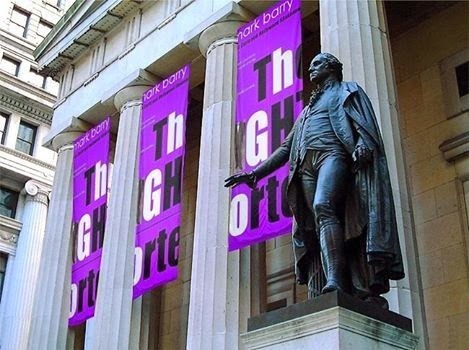
Congratulations on the launch of The Night Porter.
How did you come up with the title? Is there a message in your novel that you want readers to grasp?
I sat down in November and wrote the first chapter. A friend of mine, who worked as an Escort, told me of a job at the local hotel as a Night Porter when I was ill in 2010. I actually asked for an application form, but I bottled it. The job comes up every now and again and I think I developed a fascination with it, maybe an obsession. I wrote the first chapter straight off and it developed from there – the awards ceremony, the loathsome Julian Green, Martin Sixsmith and the character of The Night Porter. I do reference Cavani’s film in the book, but it is completely different concept. Message? Yes there is a massive message, but readers will have to get stuck in to find it. Sorry, Mary Ann.
In case you missed it, Youtube has the movie in its entirety
Mr. Chuckles has taken me into his confidence, and I dare risk his wrath by asking you to confirm your next project. Is it true that GWP will be publishing a spell-binding horror story as a series? Pray tell - we DO want to know the inside scoop.

As I mentioned earlier, I’m rewriting The Ritual and instead of publishing it as a giant novel, I am doing a six (or seven) part mini. 20,000 words each for 99c/99p. It’s too good a book to let languish, but people simply don’t trust an Indie with a big book like that. The last chapter I edited today is fantastic, possibly the most exciting chapter I have ever written, anywhere. Now my job is to strengthen the earlier chapters. I also have a book of short stories in my head, but – you will be pleased to know, Mary Ann, I am taking a big break for six months for racing and sleeping. It’s been a long winter.

Before we bid adieu, would you share with us your favorite excerpt from your favorite novel?
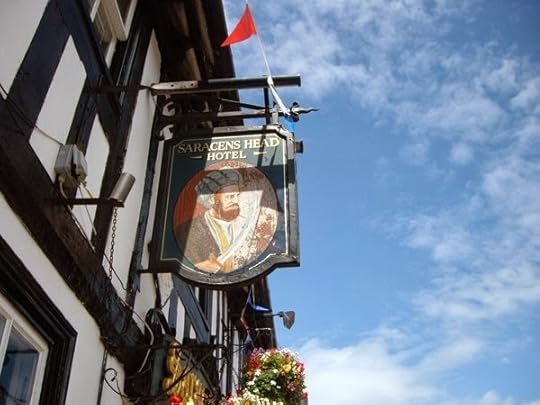
The Bramwell pub – the second most vulnerable to closure of the nine Wheatley Field’s hostelries and situated in a hollow, which acted as a repository for the water flow – was soaked to the rafters. It will take it six months to re-open, and local gossip indicates it might never re-open at all.
I’ve enjoyed a pint of Bishop’s Mitre in there, and closing would be a shame. The chap who runs it is an ex-serviceman called Michael, and he deserves success, I think, and even if he were a horrible man (and there are two hostelries in the town run by such), I still wouldn’t wish the pub to close.
You can judge the health and vitality of a town like The Fields by the number of pubs it contains, or, as a friend of mine puts it, the number of a town’s convivariums: places where people meet, encounter, congregate, laugh, whisper, plot and scheme.
The wind at night is different from its daytime counterpart, and there’s something refreshing about it. Something brisk. I let the wind embrace my face, and I close my eyes. I wonder, on occasion.
Had Neil appreciated these little night time things, he might still be here. Sixteen years older and sixteen years less dead.

My fans and I thank you for your candid replies. We wish you the very best with your new titles, which you can discuss when we have you back.
Want more of the Wizard?
http://greenwizard62.blogspot.com/
http://greenwizardpublishing.blogspot...
https://twitter.com/GreenWizard62

Amazon links:
US
http://www.amazon.com/Mark-Barry/e/B008479RWI/ref=ntt_athr_dp_pel_pop_1
UK
http://www.amazon.co.uk/Mark-Barry/e/B008479RWI/ref=ntt_athr_dp_pel_1

Thanks for stopping by, Mark.
First, please remind people who you truly are - you do not need to betray state secrets, or you can, if you wish to reveal true confessions. Only kidding, Great Wizard. My fans just want to know a little bit about the REAL you.
Me? My name is Mark Barry. That’s my real name. I live in Nottinghamshire in the heart of Robin Hood country. I am passionate about reading (note, not writing), books, comics, music, Notts County (note, not football) and most of all, aside from family, horse racing. I lovethat sport with a passion. I don’t smoke, drink (much) and run thirty miles a week. In a fortnight’s time, my company, Green Wizard, is two years old.
And I make a profit. Not a huge one, but I filed a profit nonetheless.

Mark with his son, Matthew, who, so far, shows no sign of following in his father’s literary footsteps – though he does fanatically support Notts County (which is a much more important trait).You’re a big fan of the Magpies (Notts County football team), and have written about fans supporting the team in two novels, Ultra Violence and Violent Disorder, which are Green Wizard Publishing’s best sellers. Were you surprised by the interest your football hooligan stories have generated? If so, why.

The first book, as you know, went through the roof and I attracted some good numbers. It’s a genre book, of interest to football fans and mainly hooligans, though I know you, Ngaire and Brenda have all read the books and enjoyed them, which was really surprising. Genre books sell. They have a ready audience. Look at romance. Even the most uninspired of writers can make a living selling romance novels. It’s in the genre. I wasn’t surpised though:The two books are written completely differently to the other football books – the closest I can think of is Awaydays by Kevin Sampson, though my favourite, like many other hooligan writers, is Football Factory by John King. A masterpiece. So, innovation always attracts some attention.

Why do you feel you had to tell this story about violence in sports?
Simple. I wanted to tell a story about small clubs, a small club like Notts, and the people involved in what was relatively small scale violence. I thought there was a gap too. Most hooligan books are about the big boys, the Millwalls, the Stokes, the Chelseas, the West Hams, the Birmingham Cities, the Cardiffs, etc. I thought it was about time I told the Notts story. Particularly as our deadliest rivals, Nottingham Forest had a book out there which is written by Martin King, who specializes in this kind of genre work.
How realistic are your stories?
In the football? All of them happened. Bang on. The rest of the books are fictional stories based on my observations, like other writers, and turned into big long tales.

What is the hardest part of writing your books? Do you start at the beginning and continue writing until the story is completed, or do you write chapters out of sequence?
I am a blank page writer and start at the Once Upon a Time stage. I detest editing and proofing and I rarely redraft. Give me a blank page and I am at my happiest. I don’t reread my work after its published. I shelve it. I know writers who have eight or nine drafts of a book. No way. I have to get my book finished or I reach a boredom zone. The Ritual, which is being re-released as a six (or seven) book mini-series is an exception. I saw that backwards, from the end, which is why I had to rewrite it as the middle needed a LOT of work. I didn’t say I was perfect, Mary Ann

How do you come up with the titles for your novels? Do you use working titles or are your titles set in stone? Do you have a title before you start the story, or do you choose a title once the story is completed?
All the titles bar The Ritual were conceived at the beginning of the process. I cannot believe that I was able to get Ultra Violence and Violent Disorder as titles. I like my titles. The Ritual was known as The Daughter of Satan until I saw how many other books, mostly porn, had the same title. Twenty or thirty. Happy with The Ritual as a title. It does exactly what it says on the tin. There is a great line in Book Six which would have been even better had the original title remained. I love titling and naming.

What is your favorite novel written by you, and why?
My latest book The Night Porter, without a doubt. Everything else has at least one flaw. In UV, you never find out what happens to the narrator’s job. Same as BBVD. That book may as well not have a framing sequence! Hollywood Shakedown, which a few people really like, slows down after a melting start before picking up again. Carla is oppressively dark for me nowadays – I’ve cheered up no end – and I can no longer see the black humour and the bitterness is overwhelming at times. There is one fantastic chapter in there called Smash Box which is pretty well written. The Ritual has that terrible middle that old school horror writers could get away with in the pre-Playstation era, like Stephen King’s utterly mind numbing democracy chapters in The Stand, an otherwise melting book at both ends. You couldn’t wait for that stuff to end, but you carried on, knowing that Randall Flagg was about and he was well evil!! Nowadays, modern pop kids, with hundreds and thousands of books to choose from won’t forgive a writer his fancies. They want perfection and they want it now. TNP, as you and I know it, is fast, well-paced, clever, innovative, conceited, intricate, shallow when it needs to be, with decent dialogue and interesting characters. Its accessible to both genders and most ages, though young readers seem to read their own stuff nowadays, which is of limited interest to me, excessively dialogue based as it is.

I just love when you mention ancient times in your novels. For those fans who have yet to read your work, your passion is evident with the historical references you weave throughout your stories. Since you are so knowledgeable, would you consider delving into the realm of historical fiction? Ancient Rome and/or Roman Britain, perhaps? Or William the Conqueror? Just teasing you, Great Wizard - I know your true feelings about the aftermath of the Bastard’s invasion. Just a thought since you write in multiple genres. That being said, would you care to comment?
Why would I compete with you out there, Mary Ann? You wrote the best historical fiction book I am ever likely to read with The Briton and the Dane: Concordia. I couldn’t do it justice, though I would love to do a barbarian book. Robert E Howard was one of my very favourite writers. I do love history though and have a running plotline throughout all my books about the lingering impact of the Norman success at Hastings in 1066. Life would have been very different had Harold not had that two week forced march from Stamford Bridge. And they nearly won!!
 Battle of Hastings
Battle of HastingsI am interjecting here, a passage from the first edition of “The Ritual”, which mentions Romans, Saxons, Normans, pagans, and druids - all in the same place. Love it!“We know nothing about the Villa, but we do know that the Romans built their temples on pagan ceremonial sites. Something traditionally done, each successive conqueror dynasty supplanting the sites, the churches, and the sacred spaces of the conquered. The Norman-built Three Steeples Church, for example, is built on a Saxon place of worship. The Saxon, in turn, is built on the Roman Villa site. The Romans built the Villa on an expansive Pagan ceremonial wood and a Druid burial site. Druids from this area fought alongside Boudicca in the forest, and they helped butcher a Legion, something that enraged Rome. Eventually, the rebellion faltered. Hence, the Villa and Temple built on one of their most sacred places. Those Druids practiced wood magic, sun worship, harvest rituals and human sacrifice. Like Stonehenge, this whole region drips in magical lore and a religious culture, which goes back thousands of years, all the way back to the times primitive societies began to develop faith and beliefs. Arkwright must have known this, which is why he built this masterpiece right here.” He put his arm around Jennifer again. “Listen. Feel. Embrace it, Jennifer. If you concentrate, you can sense the spirits here.”

Southwell Minster
That’s Doctor Merchant. I’d know his portentous prose anywhere, Mary Ann. I actually live a hundred yards away from The Minster and have had a look at the old Villa up close. If the mini-series sells, I’ll write a loose sequel called Monstertown. I have the first chapter written and its based around that old roman Villa. Sadly, a developer has bought it and the Council have permitted the building of six detached executive houses on there. So that will be the last we see of it

Congratulations on the launch of The Night Porter.
How did you come up with the title? Is there a message in your novel that you want readers to grasp?
I sat down in November and wrote the first chapter. A friend of mine, who worked as an Escort, told me of a job at the local hotel as a Night Porter when I was ill in 2010. I actually asked for an application form, but I bottled it. The job comes up every now and again and I think I developed a fascination with it, maybe an obsession. I wrote the first chapter straight off and it developed from there – the awards ceremony, the loathsome Julian Green, Martin Sixsmith and the character of The Night Porter. I do reference Cavani’s film in the book, but it is completely different concept. Message? Yes there is a massive message, but readers will have to get stuck in to find it. Sorry, Mary Ann.

In case you missed it, Youtube has the movie in its entirety
Mr. Chuckles has taken me into his confidence, and I dare risk his wrath by asking you to confirm your next project. Is it true that GWP will be publishing a spell-binding horror story as a series? Pray tell - we DO want to know the inside scoop.

As I mentioned earlier, I’m rewriting The Ritual and instead of publishing it as a giant novel, I am doing a six (or seven) part mini. 20,000 words each for 99c/99p. It’s too good a book to let languish, but people simply don’t trust an Indie with a big book like that. The last chapter I edited today is fantastic, possibly the most exciting chapter I have ever written, anywhere. Now my job is to strengthen the earlier chapters. I also have a book of short stories in my head, but – you will be pleased to know, Mary Ann, I am taking a big break for six months for racing and sleeping. It’s been a long winter.

Before we bid adieu, would you share with us your favorite excerpt from your favorite novel?

The Bramwell pub – the second most vulnerable to closure of the nine Wheatley Field’s hostelries and situated in a hollow, which acted as a repository for the water flow – was soaked to the rafters. It will take it six months to re-open, and local gossip indicates it might never re-open at all.
I’ve enjoyed a pint of Bishop’s Mitre in there, and closing would be a shame. The chap who runs it is an ex-serviceman called Michael, and he deserves success, I think, and even if he were a horrible man (and there are two hostelries in the town run by such), I still wouldn’t wish the pub to close.
You can judge the health and vitality of a town like The Fields by the number of pubs it contains, or, as a friend of mine puts it, the number of a town’s convivariums: places where people meet, encounter, congregate, laugh, whisper, plot and scheme.
The wind at night is different from its daytime counterpart, and there’s something refreshing about it. Something brisk. I let the wind embrace my face, and I close my eyes. I wonder, on occasion.
Had Neil appreciated these little night time things, he might still be here. Sixteen years older and sixteen years less dead.

My fans and I thank you for your candid replies. We wish you the very best with your new titles, which you can discuss when we have you back.
Want more of the Wizard?
http://greenwizard62.blogspot.com/
http://greenwizardpublishing.blogspot...
https://twitter.com/GreenWizard62

Amazon links:
US
http://www.amazon.com/Mark-Barry/e/B008479RWI/ref=ntt_athr_dp_pel_pop_1
UK
http://www.amazon.co.uk/Mark-Barry/e/B008479RWI/ref=ntt_athr_dp_pel_1

Published on March 22, 2014 18:03



